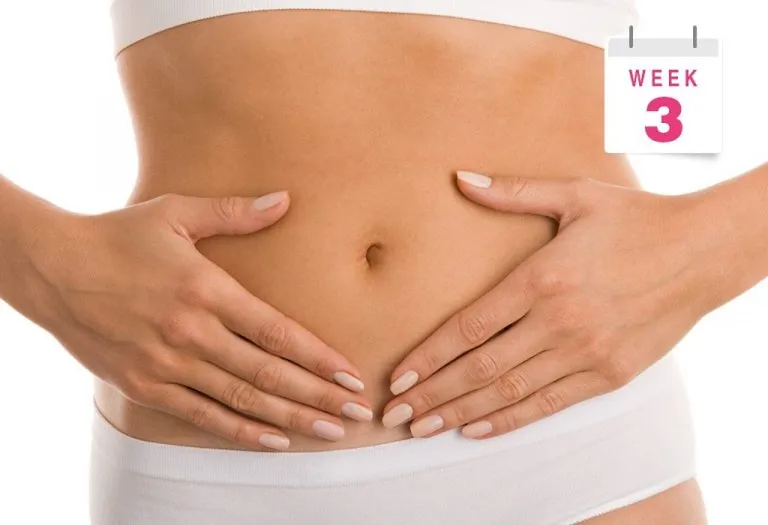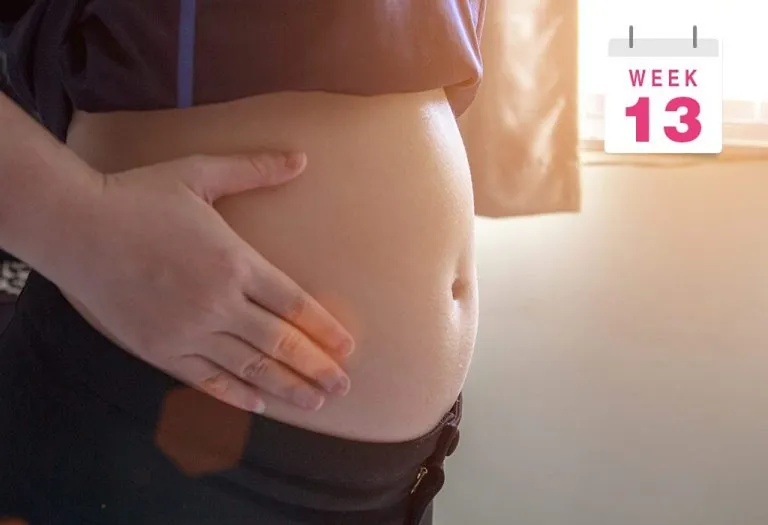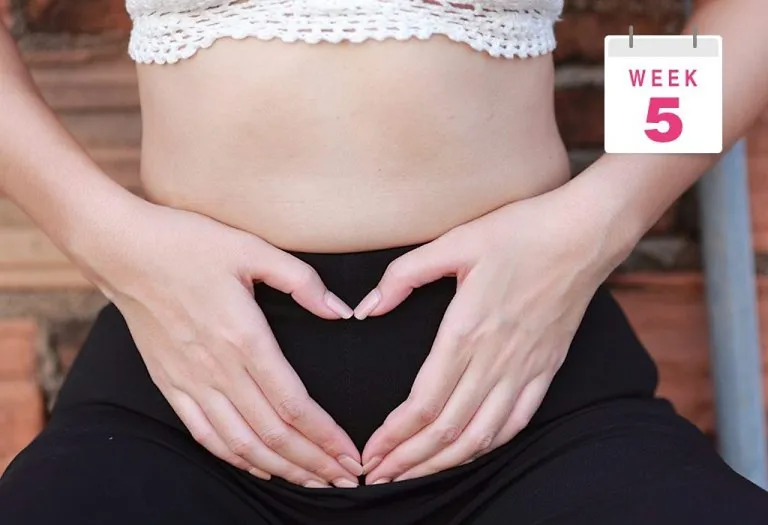35 Weeks Pregnant: Symptoms, Ultrasound, & Care Tips

- Your Baby’s Growth During Pregnancy – Week 35
- What Is the Baby’s Size?
- Common Body Changes
- Symptoms of Pregnancy at Week 35
- Belly at 35 Weeks of Pregnancy
- 35 Weeks Ultrasound
- What to Eat
- Tips and Care
- What You Need to Shop For
- FAQs
The 35th week of pregnancy is a mixed bag of emotions. Pregnant women tend to feel happy that they are almost at the end of their pregnancy. With the 35th week of pregnancy, you are concluding your 8 months of pregnancy with just one left to go. Nonetheless, there is also a significant amount of anxiety because of the approaching due date. Most women prefer to go on maternity leave now, while some choose to work until the birth. If you haven’t applied yours, now you can. The main event during this time is the baby’s gradual descent to the pelvis region as they prepare to enter the world.
Your Baby’s Growth During Pregnancy – Week 35
Now that you’re towards the end of the third trimester, there are some finishing touches that your baby is going through. Here are some expected developments your baby will have at thirty-five weeks of pregnancy:
1. Weight Gain
Your baby may gain several hundred grams and will continue to do so till delivery because of the layer of fat that is growing. Fat helps regulate the temperature of the baby and provides it with energy.
2. Soft Head
The brain will grow at a remarkable pace, and the soft spots on the baby’s head will accommodate this rapid growth. Additionally, the soft head of a baby also allows for a smoother delivery as it allows your baby to move through the birth canal (1).
3. Kidney Function
The baby’s kidneys would have fully matured by this time.
4. Liver Function
The liver is now able to function as some of the waste products can be processed by it.
What Is the Baby’s Size?
When you’re 35 weeks pregnant, the baby size is roughly about the size of a honeydew melon. That’s about 18 inches in length! The baby has packed a lot of weight by now and is about 2.3 to 2.7 kilograms (2) (3). That’s about as heavy as a 14-inch laptop being carried around in your belly!
Common Body Changes
Some of the main body changes during pregnancy at 35 weeks include:
1. Weight Gain
Most pregnant woman would have increased their weight to about 10 kilograms. The rapid increase in weight during these few weeks is because the baby is acquiring layers of fat, which increases the overall weight.
2. Improved Breathing
You may have felt some difficulty breathing during the past couple of weeks as the baby would have constricted the lungs from fully expanding. However, in preparation for delivery, the baby begins to move down towards the pelvis, reducing some of the lung constriction, and you’ll not be short of breath. However, this move puts more pressure on the bladder and makes you have frequent visits to the loo (2).
3. Heavy Breasts
You will experience full and heavy breasts as you near labour. Some mothers experience colostrum secretions during this time, and the breasts become heavier (4).
Symptoms of Pregnancy at Week 35
Signs of 35 weeks of pregnancy should be watched carefully, such as pain in the ribs. This could be because of the baby kicking away to go head down or the sign of preeclampsia. Some of the common symptoms of pregnancy at week 35 include (4) (5):
1. Frequent Urination
As the pregnancy moves towards the end of the third trimester, the baby begins to move down towards the pelvis for a vaginal delivery. However, this puts pressure on the bladder and would result in the urge to urinate more frequently.
2. Pelvis Numbness
Another side effect of the baby’s descent is that it would start applying pressure against the pelvis. This pressure may be put on some of the nerves around the pelvis, which would lead to a feeling of numbness in the region.
3. Digestive Issues
As the baby grows, the room in the torso reduces, and pressure begins to be applied to some of the internal organs in the body, such as the stomach. This can cause issues such as heartburn and other forms of gastronomical distress.
4. Braxton Hicks Contractions
These are contractions of the uterus that are often confused with labour pain. While some women may not feel them, these ‘fake’ contractions can be differentiated from real contractions by the fact that they are irregular.
5. Sore Ribs
Your baby is growing, and your body makes room for them by pushing on the ribcage. Moreover, the kicks and moves (head against the ribs in breech position) frequently until birth, which makes ribs sore and painful. Pain below the ribs can also indicate pre-eclampsia; thus, it is important to rule out between the two.
Belly at 35 Weeks of Pregnancy
Due to the massive weight gain during this time, the belly is large, and just about anyone is able to figure out that you are pregnant. By now, the uterus would have expanded to approximately one thousand times its original size.

35 Weeks Ultrasound
From this week onwards, the time is crucial, as you will be tracking foetal development. In the coming weeks, the doctor can figure out if the baby has advanced to the breech position or not. If present, the doctor will explain the probability of high risk to you.
What to Eat
Food for 35-week pregnant women mainly comprises fibre-rich food to help bowel movement and prevent issues such as constipation. As a rule of thumb, it is advisable to consume both soluble and insoluble fibres for relief against constipation. Some fibre-rich foods include broccoli, peas, pear, black beans, and oatmeal. Drink water as directed. Limit your fish consumption to two servings weekly. Opt for fish that are low in mercury, like canned light tuna, shrimp, salmon, cod, or tilapia. Avoid eating fish that are high in mercury, including swordfish, tilefish, king mackerel, and shark (6).
Tips and Care
Here are some tips which will ensure you receive adequate care in this week:
Dos
- Hiring a labour coach can help pregnant women get by, as labour coaches provide women with physical and emotional support. Some studies have shown that the need for medication reduces as they are able to provide a good support structure.
- Women who reach the 35th week of pregnancy are often anxious. Talking to people such as friends and family can help overcome stress.
- As there can be swelling in the leg region, one can use a few pillows or books to elevate the feet and reduce the swelling.
- Map out a route to the hospital in case you go into labour prematurely.
- Try and start doing Kegel exercises, as they help strengthen the pelvic muscles.
Don’ts
- Take due care while sneezing or laughing, as it could result in unintentional urination. This is because of the pressure that is applied to the bladder because of the baby’s descent.
- Avoid foods that trigger heartburn, like coffee and oily foods, as this body is vulnerable to digestive issues during this phase of pregnancy.
- Restrict caffeine consumption to under 200 milligrams daily (6).
What You Need to Shop For
There are a few things you will need to have at the time of your baby’s birth. The following items will come in handy during the process:
- Diapers and baby wipes: Make sure to put these in your hospital bag, as your baby will need them the most.
- Feeding bottles: Even if you are breastfeeding, you will need these. Your doctor may suggest you offer the bottle to your baby in the first couple of days so she can learn how to take your nipple. However, most babies learn to latch on their own, so this is more of a backup option.
- Maternity outfits: Do not forget to invest in quality maternity wear like nightsuits and maternity dresses as these too are of utmost importance during as well as after pregnancy. Check out the maternity lingerie from Bella Mama, which spells comfort during those exhausting days.
FAQs
1. How many months is 35 weeks of pregnancy?
According to the 40 weeks of pregnancy, your 35 weeks sums up to 8 months of pregnancy.
2. Is it safe to induce labour by eating spicy food?
The belief that eating spicy food induces labour is not true. Eating spicy in the last leg of pregnancy when you are about to go into labour can cause heartburn and upset stomach, leading to uterine irritation and contractions (7). Please remember that you do not go into labour until you have reached 37 weeks of pregnancy, and inducing labour at 35 weeks through any means may result in the birth of a premature baby (8).
3. Is it safe to have perineal massages at around 35 weeks of pregnancy?
Perineal massages can be beneficial for certain expectant mothers. Starting regular perineal massages around the 35th week of pregnancy may enhance the elasticity and flexibility of the perineal tissues, potentially leading to reduced tearing during vaginal childbirth. Furthermore, these massages boost blood circulation, facilitating healing and alleviating discomfort. The risks associated with these massages are minimal, but you should consult your doctor before beginning them. However, it’s important to note that they may not be effective for everyone, and there is no way to ascertain who will benefit from them (9).
The 35th week of pregnancy is a time of great anticipation as the baby is on its way out. During this time, the mother-to-be is often vulnerable, and the support of friends and family is crucial. As labour may begin at any moment, one needs to keep a watchful eye on the signs of labour, such as the bloody show.
References/Resources:
1. How Your Fetus Grows During Pregnancy; ACOG; https://www.acog.org/womens-health/faqs/how-your-fetus-grows-during-pregnancy
2. 35 Weeks Pregnant; American Pregnancy Association; https://americanpregnancy.org/healthy-pregnancy/week-by-week/pregnancy-week-35/
3. Fetal Development; perinatology.com; https://perinatology.com/Reference/Fetal%20development.htm#35
4. Week 35; NHS; https://www.nhs.uk/start-for-life/pregnancy/week-by-week-guide-to-pregnancy/3rd-trimester/week-35/
5. 35 weeks pregnant: baby’s development, sore ribs and sleeping on your side; Tommy’s; https://www.tommys.org/pregnancy-information/im-pregnant/pregnancy-week-by-week/35-weeks-pregnant
6. Pregnancy at 35 to 38 Weeks; Drugs.com; https://www.drugs.com/cg/pregnancy-at-35-to-38-weeks.html
7. Myth or Fact? How to Induce Labor Naturally; Penn Medicine Lancaster General Health; https://www.lancastergeneralhealth.org/health-hub-home/motherhood/your-pregnancy/myth-or-fact-how-to-induce-labor-naturally
8. When does labor usually start?; NIH; https://www.nichd.nih.gov/health/topics/labor-delivery/topicinfo/start-of-labor
9. Perineal massage; Pregnacy, Birth and Baby; https://www.pregnancybirthbaby.org.au/perineal-massage
Previous Week: 34 Weeks Pregnant
Next Week: 36 Weeks Pregnant
Was This Article Helpful?
Parenting is a huge responsibility, for you as a caregiver, but also for us as a parenting content platform. We understand that and take our responsibility of creating credible content seriously. FirstCry Parenting articles are written and published only after extensive research using factually sound references to deliver quality content that is accurate, validated by experts, and completely reliable. To understand how we go about creating content that is credible, read our editorial policy here.


























